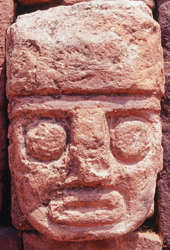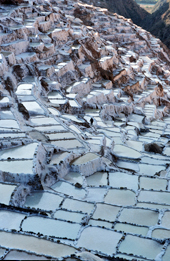Qhapaq Ñan, The Issues.


The intenational emergency to protect this road.
Various organizations, such as UNESCO, IUCN and Conservation International have begun to work on this route, placing an emergency on its protection in collaboration with the 6 countries through which the Grand Route of the Incas passes.
The idea is to put in place a system that associates:
Preservation of Patrimony
The Royal Road of the Andes is synonymous with archeological treasures with some included on the World Heritage List. There is Ingapirca in Ecuador, Cusco and the Sacred Valley in Peru, Tiwanako in Bolivia and Quilmes in Argentina, but also thousands of lesser sites that are in need of urgent protection, such as Huanuco Pampa in Peru that has become victim to scandalous vandalism in the past few years…
Protection of the Environment
This route travels across 15 of the 100 ecosystems found in South America, of which 4 are in danger: the Peruvian Yungas, the Marañon Dry Forest, the Chilean Mattoral and the Chilean Winter Rain Forest, and passes through some of the last remaining habitat of the spectacled Andean bear, the Andean condor and the vicuña. In addition, it traverses the cordillera of the Andes, an enormous watershed which provides for those who live in the valleys and on the coast. Certain situations are alarming, like that of Lake Chinchaycocha in Peru, subjected to daily pollutants from nearby mines, that ravages this ecosystem and puts in danger the life of habitants.
Cultural Patrimony and Identity of the Andean Communities
The Qhapaq Ñan passes through a number of indigenous regions with a culture deeply rooted in the past, yet it too is at risk. This route has the potential to act as a unifier between the communities and as a means to recuperate and reinforce cultural identity following centuries of oppression. The project Inka Naani in Peru is an excellent example of the revitalization of the collective memory of the people, in their traditions and oral histories that surround this symbolic road.
Currently, UNESCO is assisting the countries that share this rich patrimony towards reaching a common goal: the preparation of its candidature, the first to include the participation of multiple countries for one site, for the Qhapaq Ñan’s inscription on the World Heritage List.

